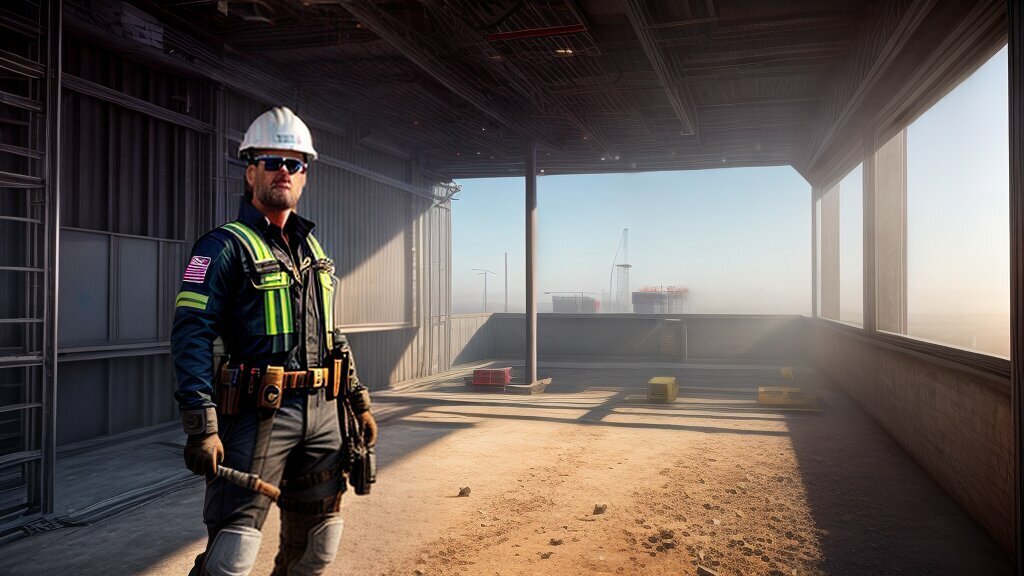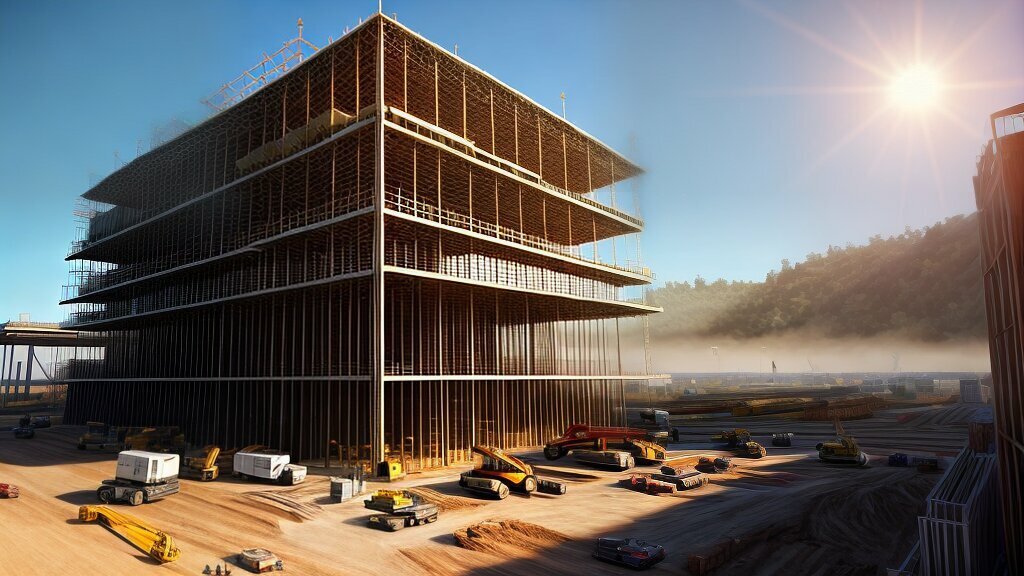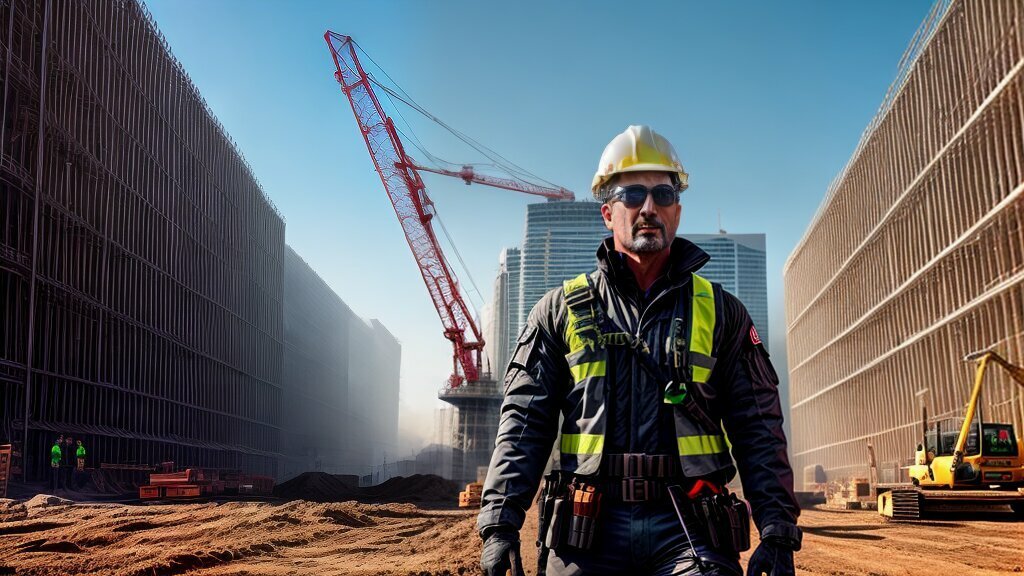Digital Twin Technology in Construction: Optimizing Energy and Resource Use
In recent years, digital twin technology has emerged as a game-changer for the construction industry. A digital twin is a virtual replica of a real-world object, process, or system, created through the use of advanced technologies such as artificial intelligence (AI), the Internet of Things (IoT), and Building Information Modelling (BIM).
In construction, digital twin technology creates virtual construction twins that simulate real-world scenarios, enabling stakeholders to monitor and optimize energy and resource use throughout the lifecycle of the project. By using digital twins, construction teams can make data-driven decisions and optimize project efficiency, reducing costs and improving sustainability.
Key Takeaways
- The construction industry is leveraging digital twin technology to optimize energy and resource use.
- Digital twin technology creates virtual construction twins that simulate real-world scenarios.
- Construction teams can use digital twins to make data-driven decisions and optimize project efficiency, reducing costs and improving sustainability.
Understanding Digital Twin Technology in Construction
With the rise of innovative solutions in the construction industry, digital twin technology has emerged as a promising tool for streamlining operations and optimizing resource use. In essence, digital twin technology creates virtual replicas of physical buildings, sites, and infrastructure, allowing for real-time monitoring, analysis, and simulation of various scenarios.
The use of digital twin technology in construction projects has gained momentum in recent years, thanks to its ability to improve efficiency, reduce costs, and enhance sustainability. Many construction companies are now integrating digital twin solutions into their project management processes, leveraging the power of advanced technologies such as artificial intelligence (AI) and the Internet of Things (IoT).
Construction Digital Twin Solutions
Digital twin technology in construction comes in various forms, depending on the specific use case and objectives. Some solutions are designed to create a virtual representation of a building, allowing project managers to simulate different planning scenarios and assess the impact on resource use and costs.
Other digital twin solutions focus on asset management, providing real-time data on the condition and performance of various components and systems within a building or infrastructure. By monitoring the actual performance of these assets against their simulated counterparts, project managers can make informed decisions on maintenance, repair, and replacement.
Building Information Modeling (BIM) with Digital Twins
One of the most significant advantages of digital twin technology in construction is its integration with Building Information Modeling (BIM). BIM is a process that involves creating a digital representation of a building’s physical and functional characteristics, allowing project managers to plan, design, and construct buildings more efficiently.
By combining BIM with digital twin technology, project managers can leverage the power of real-time data and simulation to optimize the planning and construction phases of a project. This integration allows for more accurate cost estimation, improved risk management, and better allocation of resources.
AI and Digital Twin Technology in Construction
Artificial intelligence (AI) is another critical component of digital twin technology in construction. AI-powered digital twin solutions can collect, analyze and make sense of vast amounts of data, providing insights that can help project managers make informed decisions in real-time.
AI algorithms can also enhance the accuracy of digital twin simulations, making them more precise and realistic. This capability allows project managers to assess various scenarios and identify potential issues before they arise, minimizing risk and improving project outcomes.
Benefits of Digital Twin Technology in Construction
Digital twin technology offers numerous benefits for the construction industry. By creating virtual models of construction projects, this technology can optimise energy and resource use, streamline workflows, and enhance collaboration between stakeholders. Additionally, the integration of IoT (Internet of Things) with construction digital twins enables real-time monitoring and data-driven decision-making.
Improved Efficiency
Digital twin technology can significantly improve efficiency in construction projects by enabling accurate planning and simulation. This technology allows contractors to create virtual construction twins that can be used to test different scenarios, identify potential issues, and devise solutions before the actual construction process begins. By simulating various conditions, digital twin technology can help contractors optimise designs and workflows, reduce errors, and make more informed decisions.
Cost Savings
Another key benefit of digital twin technology is cost savings. By enabling accurate planning and simulation, this technology can reduce the likelihood of costly errors and delays during the construction process. Additionally, by enabling real-time monitoring and data-driven decision-making, digital twin technology can help contractors identify and address potential issues before they become significant problems. This can lead to significant cost savings over the course of a project.
Sustainability
Digital twin technology can also enhance sustainability in construction projects. By enabling accurate planning and simulation, this technology can help contractors identify opportunities to reduce energy and resource use. Additionally, by enabling real-time monitoring and data-driven decision-making, digital twin technology can help contractors identify and address potential issues related to sustainability. For example, by monitoring energy usage in a building, contractors can identify areas where energy usage can be reduced, leading to a more sustainable building.

IoT and Digital Twins: The integration of IoT with digital twin technology enables real-time monitoring and data-driven decision-making.
Implementing Digital Twin Technology in Construction Projects
Implementing digital twin technology in construction projects involves several considerations and best practices. One critical aspect is construction project simulation using digital twins. By creating a virtual replica of the physical construction project, stakeholders can accurately plan, anticipate and mitigate risks, and allocate resources efficiently.
Another key consideration is the integration of AI in digital twin solutions. AI can enhance the capabilities of digital twins and help in making data-driven decisions. For instance, AI can analyse real-time data from IoT sensors integrated with digital twins, enabling stakeholders to make informed decisions quickly.
| Best Practices | Considerations |
|---|---|
|
|
Another critical consideration is the management of data to ensure that the digital twin remains an accurate representation of the physical construction project. It is vital to establish protocols for data collection, analysis, and interpretation that cater to the needs of all stakeholders. Additionally, it is essential to collaborate with stakeholders throughout the implementation process to ensure that their requirements are factored into the design of the digital twin solution.

Overall, the successful implementation of digital twin technology in construction projects requires careful planning and consideration of several factors. Careful consideration can be made by following best practices, such as ensuring data integrity, selecting appropriate digital twin solutions, and collaborating with stakeholders throughout the implementation process. By doing so, stakeholders can reap the benefits of digital twin technology in construction, such as increased efficiency, improved risk management, and cost savings.
Overcoming Challenges in Adopting Digital Twin Technology in Construction
While digital twin technology holds enormous potential in the construction industry, there are several challenges that need to be addressed for successful implementation.
One of the major challenges is data integration. Digital twins rely on a vast amount of data to simulate real-world scenarios accurately. Therefore, it is essential to ensure that the data sources from various systems are compatible and can be integrated seamlessly.
Cybersecurity is another significant concern when it comes to adopting digital twin technology in construction. As the number of connected devices and sensors increases, it becomes more critical to ensure the security of the data and infrastructure.
Collaboration and coordination between different stakeholders are also crucial for successful digital twin implementation in the construction industry. It requires a high level of cooperation between all parties involved, including architects, builders, engineers, and technology providers.
Fortunately, the adoption of artificial intelligence (AI) can help address these challenges and streamline the adoption process. AI’s ability to analyze large amounts of data and make real-time decisions enables digital twin technology to be used effectively in construction projects.

“The integration of digital twin technology in construction is a complex process that requires careful planning and execution. Overcoming these challenges will be critical in realizing the full potential of this transformative technology in the industry.”
Case Studies: Successful Applications of Digital Twin Technology in Construction
Digital twin technology has already demonstrated significant potential to transform the construction industry through its ability to simulate real-world scenarios in a virtual environment. Below are a few examples of successful applications of this technology:
| Project | Description |
|---|---|
| Heathrow Airport Terminal 5 | The construction of Heathrow Airport Terminal 5 involved the use of digital twin technology to simulate various scenarios, improve planning, and mitigate potential risks during construction. The virtual construction twin enabled the project team to optimize resource allocation, improve safety, and reduce costs. |
| London Bridge Station Redevelopment | Digital twin technology played a vital role in the redevelopment of the London Bridge Station. The virtual construction twin allowed the project team to monitor progress in real-time, manage logistics efficiently, and ensure compliance with safety regulations. The technology also enabled the team to optimize the use of space and resources during construction and improve project outcomes. |
| Building Information Modeling (BIM) | BIM is a significant application of digital twin technology in construction projects. It enables the creation of a virtual construction twin that can simulate various scenarios and help designers and construction teams optimize building design, construction, and maintenance. The technology has already demonstrated significant potential in enhancing the efficiency and sustainability of construction projects. |
These examples highlight the transformative potential of digital twin technology in the construction industry. By enabling real-time monitoring, data-driven decision-making, and optimized resource allocation, digital twin technology can ensure improved project outcomes, reduced costs, and enhanced sustainability.

Future Trends in Digital Twin Technology for Construction
The future of digital twin technology in the construction industry looks promising, with emerging trends that promise to enhance its capabilities. One such trend is the increased integration of AI in digital twin solutions, enabling more advanced data analysis and decision-making. With AI, digital twins can become more sophisticated in their ability to anticipate and manage risks, anticipate delays, and even optimize resource allocation.
The Internet of Things (IoT) is another trend that is expected to shape the future of digital twin technology in construction. By integrating IoT devices with construction digital twins, real-time monitoring and data collection can be improved, leading to more proactive and efficient decision-making. This will help construction teams to better manage projects, reduce costs, and improve overall project efficiency.
Collaboration Through Digital Twins
Another potential trend in the use of digital twin technology in construction is collaboration. Digital twins can enable greater collaboration between stakeholders, such as architects, engineers, contractors, and clients. By creating a digital twin of a construction project, all stakeholders can have access to the project’s progress and contribute to the decision-making process. This can lead to improved communication, better project outcomes, and enhanced stakeholder satisfaction.
With these trends in mind, it is clear that digital twin technology has the potential to transform the construction industry, making it more efficient, cost-effective, and sustainable. By embracing these trends and investing in digital twin solutions, construction companies can ensure that they remain competitive and meet the evolving needs of the industry.

Advancements in Digital Twin Technology and Construction Industry Transformation
The use of digital twin technology in the construction industry is transforming the way projects are planned, designed, and executed. As the technology continues to evolve, its potential for driving industry-wide disruption and improving project outcomes is increasingly being recognised.
Advanced analytics and artificial intelligence (AI) are now being integrated into construction digital twin solutions, enabling real-time monitoring and data-driven decision-making. This allows construction professionals to optimise resource use, reduce costs, and enhance sustainability by identifying and addressing inefficiencies in real-time.
Moreover, digital twin technology is enabling new levels of collaboration across different areas of the construction process. For example, by creating a virtual construction twin, architects, engineers, and construction teams can work together on a single platform, sharing design ideas, and resolving issues upfront. This not only improves project efficiency but also fosters a culture of innovation and knowledge-sharing.
The rise of digital twin technology is also bringing about new project management paradigms. Construction project simulation using digital twins allows for more accurate planning, risk management, and efficient resource allocation, enabling construction projects to be delivered on time and within budget.
The potential for transformational change through digital twin technology is immense. As construction companies continue to seek greater efficiency, productivity, and sustainability in their operations, digital twin technology is likely to become an increasingly indispensable tool.

The potential for transformational change in the #construction industry using digital twin technology is immense. #DigitalTwinTechnology
Implementing Digital Twin Technology: Best Practices and Considerations
Implementing digital twin technology in construction projects requires careful planning and consideration. To ensure successful adoption, industry stakeholders must take into account several factors:
- Data management: Determine what data needs to be collected, stored, and analyzed within the digital twin solution.
- Technology integration: Consider how digital twin technology will integrate with existing systems and technologies employed in the construction project.
- Stakeholder collaboration: Identify the various stakeholders involved in the construction project and ensure their engagement and collaboration in the implementation of digital twin technology.
- Digital twin solutions: Select the appropriate digital twin solutions to meet the specific requirements of the construction project. Consider factors such as functionality, scalability, and value for money.
Successful implementation of digital twin technology in construction projects requires adherence to best practices:
- Define clear project goals: Determine which aspects of the construction project will benefit most from digital twin technology, and define clear goals and objectives.
- Manage change: Introduce digital twin technology in a phased and gradual manner, allowing sufficient time for stakeholders to adapt and adjust to the new technology.
- Invest in training: Ensure that all stakeholders are adequately trained in using digital twin technology, enabling them to fully realize the value of the technology and avoid mistakes.
- Ensure service and support: Select digital twin solution providers that offer comprehensive service and support, including maintenance, upgrades, and troubleshooting.
By following best practices and carefully considering key factors, construction industry stakeholders can successfully implement digital twin technology to optimize energy and resource use, improve efficiency, and drive sustainable practices.

Conclusion
In summary, digital twin technology has the potential to transform the construction industry by optimizing energy and resource use. The use of digital twin solutions for construction projects, including integration with BIM and AI, highlights the role of this technology in enhancing project outcomes and enabling sustainability.
The benefits of digital twin technology include real-time monitoring and data-driven decision-making through IoT integration with construction digital twins. Implementing digital twin technology in construction projects can lead to accurate planning, efficient resource allocation, and streamlined risk management.
However, there are potential challenges in adopting digital twin technology, such as issues with data integration and cybersecurity. To overcome these challenges, collaboration and AI integration are essential.
Successful applications of digital twin technology in the construction industry have been showcased through case studies. These successes demonstrate the positive outcomes achieved through the use of virtual construction twins, including improved project efficiency and lower costs.
Future trends in digital twin technology for construction include increased AI integration, advanced IoT capabilities, and enhanced collaboration through digital twins. These trends reflect the evolving needs of the construction industry and the potential for digital twin technology to address them.
Overall, digital twin technology is driving transformation and enabling sustainable construction practices. Implementing digital twin technology requires careful consideration of best practices and stakeholder collaboration. Selecting the right digital twin solutions for specific construction requirements is also critical.
FAQ
Q: What is digital twin technology in the construction industry?
A: Digital twin technology in the construction industry involves creating virtual construction twins that simulate real-world scenarios and help drive efficiency in the industry.
Q: How does digital twin technology optimize energy and resource use in construction?
A: By creating virtual replicas of construction projects, digital twin technology allows for accurate planning, risk management, and efficient resource allocation, leading to optimized energy and resource use.
Q: What is the role of artificial intelligence (AI) in digital twin technology?
A: AI enhances digital twin technology in construction by improving simulation capabilities, enabling data-driven decision-making, and enhancing the overall performance of digital twin solutions.
Q: What are the benefits of digital twin technology in construction?
A: Digital twin technology offers improved efficiency, cost savings, and sustainability in construction projects. It enables real-time monitoring through IoT integration and facilitates data-driven decision-making.
Q: How can digital twin technology be implemented in construction projects?
A: Implementing digital twin technology in construction projects involves construction project simulation, accurate planning, risk management, and efficient resource allocation. AI plays a crucial role in enhancing the capabilities of digital twin solutions.
Q: What challenges are faced in adopting digital twin technology in construction?
A: Challenges in adopting digital twin technology include data integration, cybersecurity, and the need for industry-wide collaboration. AI can help address these challenges and streamline the adoption process.
Q: Can you provide examples of successful applications of digital twin technology in construction?
A: Successful applications of digital twin technology in construction include virtual construction twins that have improved project efficiency, reduced costs, and enhanced sustainability.
Q: What are the future trends in digital twin technology for construction?
A: Future trends in digital twin technology include increased AI integration, advanced IoT capabilities, and enhanced collaboration through digital twins. These trends address the evolving needs of the construction industry.
Q: How is digital twin technology driving transformation in the construction industry?
A: Digital twin technology is driving transformation in the construction industry by improving project outcomes, increasing productivity, and enabling sustainable construction practices. AI plays a crucial role in advancing digital twin capabilities.
Q: What are the best practices and considerations for implementing digital twin technology in construction?
A: Best practices for implementing digital twin technology in construction include data management, technology integration, and stakeholder collaboration. It is essential to select the right digital twin solutions for specific construction requirements.








